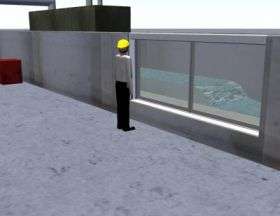Making waves: New research could minimize the impact of future tsunami

For the first time, a team of experts is preparing to create tsunami in a controlled environment in order to study their effects on buildings and coastlines - ultimately paving the way for the design of new structures better able to withstand their impact.
Ahead of today’s Coastal Structures 2007 International Conference Dr Tiziana Rossetto, UCL Department of Civil & Environmental Engineering, unveiled plans to develop an innovative new tsunami generator capable of creating scaled-down versions of the devastating waves. The UCL team will be working with marine engineering specialists HR Wallingford (HRW) throughout the project.
“Tsunami are water waves generated by earthquakes, underwater landslides, volcanic eruptions or major debris slides,” said Dr Rossetto. “The waves travel across oceans with small vertical displacements and in open water you could easily bob over one without noticing. It’s when the waves approach the coastline, hit shallower water, slow down, and grow taller that you get the huge wall of water that people visualise when you mention a tsunami.
“The main gap in our knowledge is about what happens when the tsunami wave approaches the nearshore region and then runs inland. These flow processes cannot be simplified using mathematical models because of the complex interaction that takes place with beaches, sediment, coastal defences and then in and around buildings.
“It is possible for the whole process to be simulated with hydraulic models, but to get meaningful data the tsunami wave has to be accurately generated in the first place. Conventional wave generators haven’t been able to replicate tsunami because of the unusually long wavelength that is required.”
Professor William Allsop of HRW said: “Our new machine will control the flow of a large mass of water by using air suction within an inverted tank. We have used this technology over many years to make model tides in large scale models and our collaboration with UCL means we will be able to produce a unique research facility.”
The new tsunami generator will be able to create multiple waves, replicating the three or four peaks experienced during the Boxing Day tsunami that hit the Indian Ocean in 2004. The tsunami will pass down a 45m long flume at realistic wavelengths, mimicking the characteristics of waves which have passed from deep water (approx. 200m) into shallow water (20m – 50m) as they approach the coast. The wave flume will be equipped to measure coastal processes, inundation and wave forces as the tsunami travels up a shelving seabed, breeches the coastline and flows inland.
After the initial series of experiments, a team of researchers from UCL and HRW will go on to examine the effects of retreating and repeated waves on seawalls and beaches. The tests will measure the force exerted by the waves on representative buildings and quantify the wave’s ability to erode the coast, potentially destabilising structures completely.
The tsunami experiments will take place at HR Wallingford’s laboratories in Oxfordshire and construction of the generator is scheduled for completion in the summer of 2008. UCL and HRW plan to make the facility available to international teams of researchers in autumn 2009.
Source: University College London





















